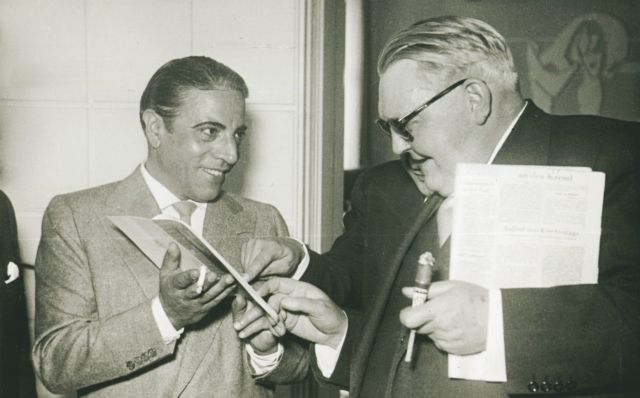
Revival of the greek registry (1953-1960)
Following the end of WWII, over a period of eight years, 24 successive cabinets failed to adopt measures for the revival of the Greek registry and its development into a productive entity that would benefit the Greek economy. This perspective was highlighted by the government of Alexandros Papagos, whose victory in November 1952 elections set […]
Spotlight
-
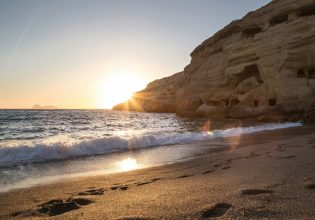
Η ελληνική παραλία σύμβολο μιας ολόκληρης εποχής – Ένα εντυπωσιακό βίντεο από ψηλά
-

Κακή εξέλιξη με τον ιό H5N1 - Εντοπίστηκε σε αγελαδινό γάλα
-
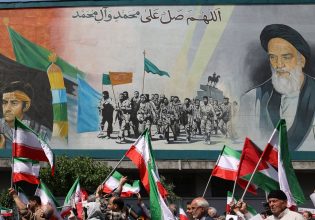
Καθηγητής του Χάρβαρντ: «Απεχθάνομαι το ιρανικό καθεστώς, αλλά έχει δίκιο – Ένοχες οι ΗΠΑ»
-

Υποψήφια του Μελανσόν στις ευρωεκλογές, καλείται να ζητήσει «συγγνώμη για τρομοκρατία» - Τι της αποδίδουν;
Following the end of WWII, over a period of eight years, 24 successive cabinets failed to adopt measures for the revival of the Greek registry and its development into a productive entity that would benefit the Greek economy. This perspective was highlighted by the government of Alexandros Papagos, whose victory in November 1952 elections set the country’s political scene on a new course.
In December 1950, Sotirios Matantos, representing the renowned maritime enterprise Kassos S.A., made a bold proposal to revive the Greek registry. He called for the introduction of legislation allowing ships owned by foreign enterprises to be placed under the Greek flag. He further added that there should be provision for the signing of a specific agreement, stipulating that it would not be possible for the government to pass any law altering the terms under which each vessel has been registered. This idea formed the basis for the introduction of realistic legislation for ocean-going shipping in late 1953, when the government incorporated a special article referring to Greek-flag ships, within the developmental law 2987 bearing constitutional power.
The Papagos administration, incorporating a distinguished team of economists, headed by the Minister for Coordination Spyros Markezinis, fully appreciated the enormous boost in the economy should the majority of the Greek-owned ships acquired after the War be placed under the Greek flag. Such a prospect could also benefit the country in a different way. Many entrepreneurial initiatives by Greek shipowners contributed significantly to the economies of foreign countries and thus a strong Greek registry could ultimately become an invaluable tool for Greek foreign policy.
A shipowner enjoying high recognition worldwide at the time was Aristotle Onassis. He had started cooperating with West Germany in 1949, when the country was facing serious problems, namely the devastation caused by air strikes during the War and unemployment. German shipyards, almost totally destroyed, were not allowed by the Allies to resume their shipbuilding activity for some years. At this critical moment, Onassis acquired 16 Canadian corvettes and sent them to a Kiel shipyard in order to convert them into whalers, together with a T2-type tanker that was to be converted into a whaling factory. Upon the completion of the conversions, this new fleet joined the international whaling market, a sector completely unknown to Greeks, but not to Germans, who were among the industry leaders in pre-war years. Consequently, Onassis offered about 600 jobs to unemployed German seafarers to man his whaling fleet. Many other German seafarers were employed on several Greek-owned vessels until 1958.
Aristotle Onassis was instrumental in facilitating the reconstruction of several West German shipyards. Once the ban on building was lifted by the Allies, Onassis placed a huge order for the construction of 20 tankers at shipyards in Hamburg, Kiel and Bremen, to be delivered between 1953 and 1955. An additional 44 orders for the construction of tankers and dry cargo vessels by Greek shipowners supported the efforts for the revival of the West German shipbuilding industry, before Japan became the world shipbuilding leader, posing strong competition to its European counterparts.
The measures adopted to facilitate the revival of the Greek registry did not, however, have an immediate effect. It was first necessary to consolidate mutual trust between the state and investors, which took time following a long period of turmoil. Shipowner Markos Nomikos tried to set an example by placing a newly built tanker under the Greek flag, before the government introduced measures to strengthen the registry, while fellow shipowner Eugene Eugenides raised the Greek flag on a new dry cargo vessel a few months later. The latter also promised Prime Minister Papagos to place an ocean liner under the Greek flag in the line between Greece and the USA, whose importance was growing following the post-war increase of Greek immigration. Unfortunately, Eugenides passed away suddenly in April 1954; however, his heirs, respecting his will, raised the Greek flag on the liner QUEEN FREDERICA, which started its transatlantic voyages a few months later, acting as a bridge connecting Greek immigrants to their homeland. The ultimate offer of this great benefactor to his country was the establishment of the Eugenides Foundation.
Another important issue faced by the industry was maritime education. Greece was deprived of the appropriate infrastructure for this sector. The first organised maritime school had been founded and operated in the island of Hydra in 1930 and was temporarily housed in Piraeus during post-war years. In August 1950, Sofoklis Venizelos’ government set the foundations for the establishment of public maritime schools. Building costs were covered by surplus capital of 200,000 pounds from the Wartime Risk Insurance Association and 45,000 pounds donated by shipowners, who had acquired the 100 Liberty ships. Operating costs were to be covered through a mandatory levy collected from all Greek-flag ships. The first public Maritime School complex was built in Aspropyrgos, near Athens, in 1955, with others following later in other parts of Greece.
Meanwhile, Greek shipowners’ achievements and their powerful presence within the global seaborne trade put on focus certain aspects concerning their business growth. In 1953, the US government accused distinguished shipowners such as Stavros Niarchos, Aristotle Onassis and others for illegal buying and management of US ships. The issue made headlines in the US despite the fact that the ships had been acquired following the opinion of leading US law firms and therefore had the approval of the US Maritime Commission. After careful consideration, it was finally decided by the interested parties that any complicated and lengthy legal procedures would ultimately cost more than an expensive compromise. Consequently, an agreement was reached, according to which several of the ships were handed back to the US government, with fines being paid at the same time.
On 4 October 1955, Alexander Papagos passed away and Constantine Karamanlis was sworn in as Prime Minister. World shipping was at the time in a state of euphoria, due to the improved freight market. In early 1956, despite the fact that the majority of Greek-owned newbuildings were still delivered under foreign flags, the efforts to revive the Greek registry were clearly leading to positive results. In the meantime, the climate between shipowners and the state had drastically improved and this was highlighted through important investments in the country by renowned shipowners. Among these was the establishment of a shipbuilding facility at Skaramanga, near Athens, by Stavros Niarchos, as well as the signing of a memorandum of agreement with Aristotle Onassis that led to the creation of Olympic Airways. In the same year, improving relations between shipowners and seafarers led to the adoption of appropriate measures allowing Greeks serving on board foreign flagged ships to be insured through the Seamen’s Pension Fund (NAT).
In October 1956, the closure of the Suez Canal shook the global maritime trade, causing freight rates to skyrocket. Any shipowner, who did not have ships on time-charter at the time, especially those who operated tankers, enjoyed unprecedented profits.
A few months later, in December 1956, Constantine Karamanlis met Greek shipowners in New York, inviting them to have their ships placed under the Greek flag. At the same time, the government was demonstrating its commitment to upgrade the infrastructure of Piraeus through major works in the port.
Karamanlis was one of the very few politicians who never hesitated to state that his main interest was the prestige that a country of Greece’s size would enjoy having a powerful merchant fleet. A typical example of his personal interest was demonstrated during the inauguration of the transoceanic PATRIS on 13 December 1959, which initiated the Greece-Australia Line. On that day, the Greek administration was preoccupied with arrangements for the arrival of Dwight Eisenhower the following day, being the first official visit of a US president in Greece. Nevertheless, Karamanlis went to Piraeus to inaugurate the PATRIS and spent some time on board shown around by its owner, Anthony Chandris.
Despite the Prime Minister’s intentions, governmental bodies could not adapt to the fast rhythm shipping was operating in internationally. Back in March 1957, Costas Gratsos, representing the Onassis group, had a meeting with Karamanlis to brief him on the 900 million dollars worth investments by Greek owners at the time for the building of ships in Japan. Gratsos explained that the promotion of Greek products in Japan, especially tobacco, could be enhanced by shipowners having so close a co-operation with the Japanese shipbuilding industry. The Prime Minister was very positive regarding the idea and immediately summoned government officials for a meeting with shipowners’ representatives where it was decided that a special message should be addressed to the Japanese government. A month later, Gratsos delivered the message to the Japanese Prime Minister; however, the Greek state, having failed to take advantage of this opportunity, saw the country’s exports to Japan reduced at a time Greek shipbuilding investment in Japan was reaching unprecedented levels.
Following a long, prosperous period, the market began to fall dramatically. Many new ships performed their maiden voyages at a loss, whilst newbuilding orders were cancelled at great loss to the owners. This bleak environment was intensified following the attack by the International Transport Federation (ITF) against flags of convenience, among which were many vessels belonging to Greek interests. The threat of being boycotted and the mobilization of international labour organisations by the ITF forced shipowners to negotiate and come to agreements, including a levy for the operation of any foreign-flag ship under their management. At the same time, the distinction between Greek-flag and Greek-owned ships by British insurers led to an extensive increase in insurance costs. As a result, it became harder to gain profit amidst a deep crisis, leading more vessels to lay-up, thousands of seafarers into unemployment and companies into bankruptcy.
In 1959, the global economy showed positive signs, creating optimism within the shipping industry. Meanwhile, Greek owners, responding to a government call to assist combatting unemployment, replaced a large number of foreign crews with Greek seafarers. At the same time, the constructive co-operation between shipowners and representatives of the Panhellenic Seamen’s Federation (PNO) facilitated the progress of the former’s negotiations with representatives from the International Transport Federation.
In the summer of 1960, Karamanlis inaugurated in Piraeus the first newly-built Greek passenger ferry, the EGNATIA, whose operation was instrumental to the establishment of the Greece-Italy line between Patras and Brindisi. Later in the year, on 22 October 1960, in a special ceremony held at Piraeus in the presence of King Paul, the Prime Minister handed over the Greek flag to Stavros Livanos, owner of the tanker ATLANTIC QUEEN, being the 1,000th ship to enter the Greek registry.
Source: Greek Shipping Miracle
Ακολουθήστε το in.gr στο Google News και μάθετε πρώτοι όλες τις ειδήσεις







![Φυσικό αέριο: Γιατί είναι δύσκολη η απεξάρτηση από τη Ρωσία – Τα εμπόδια [Χάρτης]](https://www.ot.gr/wp-content/uploads/2022/07/gas-1-1-300x300.jpg)



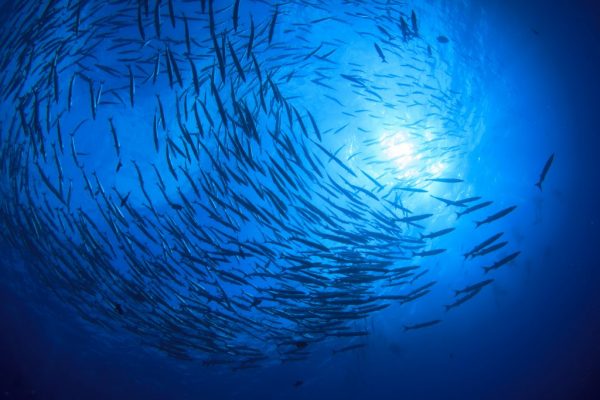












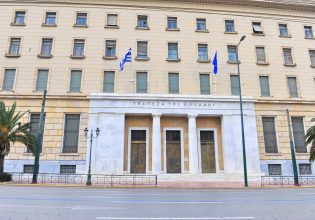

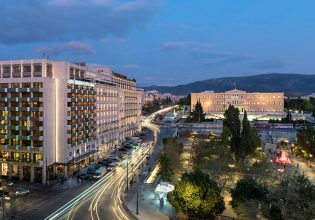

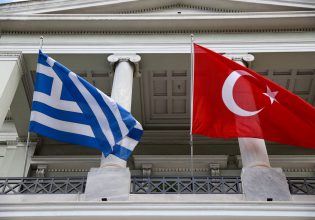






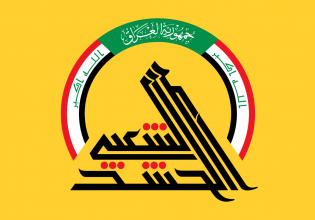


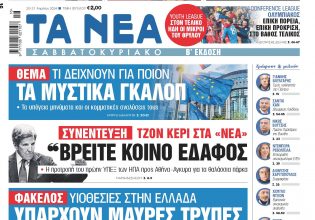
 Αριθμός Πιστοποίησης Μ.Η.Τ.232442
Αριθμός Πιστοποίησης Μ.Η.Τ.232442